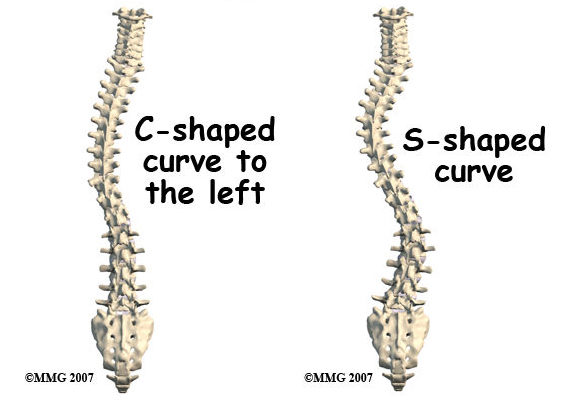Scoliosis is a common spinal deformity characterized by a lateral curvature of the spine, often leading to bodily asymmetry and postural abnormalities. While scoliosis typically emerges during adolescence, it can also develop and worsen in adults, presenting numerous challenges such as spinal deformity, impaired bodily functions, pain, and psychological stress. Early identification and intervention are crucial, as the subtle initial symptoms of scoliosis can often be mistaken for normal postural variations. Implementing the correct scoliosis screening tools can help detect early signs and prevent the condition from progressing.

Defining Scoliosis: Symptoms and Importance of Early Detection
A. Definition and Symptoms of Scoliosis
Scoliosis is defined as an abnormal lateral curvature of the spine, resulting in an “S” or “C” shaped curve. Common symptoms include:
- Asymmetric shoulder height or shoulder blade prominence
- Uneven waist or back
- Pelvic tilt or hip asymmetry
- Irregular gait or posture
- Courbure visible de la colonne vertébrale

In severe cases, scoliosis can lead to impaired bodily functions such as respiratory difficulties, digestive issues, and increased cardiac pressure. Adolescents with scoliosis may experience psychological distress due to body image concerns, while adults may suffer from mobility limitations and chronic pain [1][2].
B. The Critical Role of Early Identification and Diagnosis
Early detection of scoliosis is vital for effective intervention, which can help halt the progression of spinal curvature and mitigate complications. Regular spinal screenings and the use of scoliosis detection tools are essential for identifying abnormalities before they advance. Once scoliosis is suspected, further evaluation through imaging techniques such as X-rays or MRIs allows healthcare providers to confirm the diagnosis and initiate timely treatment [3][4].
Functionality of Scoliosis Screening Tools
A. Overview of Screening Tool Functions and Principles
Scoliosis screening tools are designed to assess spinal alignment and detect abnormal curvature. These tools, such as scoliometers and basic X-ray equipment, measure the degree of spinal curvature, providing critical data for identifying potential issues. The screening process typically involves measuring the spine’s curvature and comparing it to normal ranges. Curvatures exceeding specific angles indicate potential scoliosis [5][6].

B. Best Practices for Performing Scoliosis Screening
Correctly performing scoliosis screening requires professional knowledge and technique. The process involves:
- Positioning: Ensure the patient is standing upright in a natural posture.
- Measurement: Use a scoliometer or other screening tool to measure the spinal curve.
- Recording: Document the curvature angle and any observed asymmetry.
- Assessment: Based on the measurement results, determine whether further diagnostic tests or treatments are needed.
By following these guidelines, healthcare providers can efficiently identify early signs of scoliosis and recommend timely interventions [7][8].
Effective Management of Scoliosis: Screening and Diagnosis
A. Selecting the Right Screening Tool
Choosing the appropriate scoliosis screening tool is essential for accurate assessment. Options like scoliometers and X-ray machines are commonly used, depending on the severity and clinical setting. When selecting a tool, factors such as patient age, history, and symptoms should be considered [9][10].
B. Collaborating with Healthcare Professionals for Comprehensive Diagnosis and Treatment
Early diagnosis and close collaboration with medical professionals are key for effective scoliosis management. After initial screening, healthcare providers may recommend further evaluations such as detailed imaging or clinical tests. Treatment plans may include physical therapy, bracing, or surgery depending on the severity of the condition [11][12].
Forethought Medical’s Innovative Scoliosis Screening Tools
Forethought Medical offers advanced scoliosis screening tools that are user-friendly and suitable for various age groups. These tools provide high-precision measurements, helping clinicians detect scoliosis early and make informed treatment decisions. Forethought’s products are recognized for their accuracy and durability, with many healthcare professionals praising their ease of use and reliable performance [13][14].
For more information about Forethought Medical’s scoliosis screening tools, visit their official website at www.forethoughtmed.com or contact their customer service department. The company also offers demonstrations and training sessions for healthcare providers interested in learning more about their products [15].
Références
- [1] Weinstein SL, Dolan LA, Cheng JC, et al. “Adolescent Idiopathic Scoliosis.” The Lancet. 2008;371(9623):1527-1537. doi : 10.1016/S0140-6736(08)60658-3.
- [2] Negrini S, Donzelli S, Aulisa AG, et al. “2016 SOSORT Guidelines: Orthopaedic and Rehabilitation Treatment of Idiopathic Scoliosis During Growth.” Scoliose et troubles de la colonne vertébrale. 2018;13:3. doi : 10.1186/s13013-018-0175-8.
- [3] Trobisch P, Suess O, Schwab F. “Idiopathic Scoliosis.” Dtsch Arztebl Int. 2010;107(49):875-883. doi : 10.3238/arztebl.2010.0875.
- [4] Hresko MT. “Clinical Practice: Idiopathic Scoliosis in Adolescents.” New England Journal of Medicine (en anglais). 2013;368(9):834-841. doi : 10.1056/NEJMcp1209063.
- [5] Kaspiris A, Grivas TB, Weiss HR, Turnbull D. “Scoliosis: Review of Diagnosis and Treatment.” Journal international d'orthopédie. 2013;37(1):34-42. doi : 10.1038/s41390-020-1047-9.
- [6] Monticone M, Ambrosini E, Cazzaniga D, et al. “Active Self-Correction and Task-Oriented Exercises Reduce Spinal Deformity and Improve Quality of Life in Subjects with Mild Adolescent Idiopathic Scoliosis: Results of a Randomized Controlled Trial.” Eur Spine J. 2016;25(10):3118-3127. doi : 10.1007/s00586-016-4625-4.
- [7] Kotwicki T, Negrini S, Grivas TB, et al. “Methodology of Evaluation of Scoliosis, Back Deformities and Posture.” Scoliose. 2009;4:26. doi : 10.1186/1748-7161-4-26.
- [8] Weiss HR, Negrini S, Rigo M, et al. “Indications for Conservative Management of Scoliosis (Guidelines).” Scoliose. 2006;1:5. doi: 10.1186/1748-7161-1-5.
- [9] Newton PO, Upasani VV, Farnsworth CL, et al. “Spinal Growth Modulation with Use of a Tether in an Immature Porcine Model.” J Bone Joint Surg Am. 2011;93(9). doi: 10.2106/JBJS.J.00827.
- [10] Patel A. “Spinal Deformities Treatment Advancements.” Chirurgie clinique de la colonne vertébrale. 2019;32(1):33-38. doi: 10.1097/BSD.0000000000000900.
- [11] Smith JS, Shaffrey CI, Berven S, et al. “Spinal Deformity Surgery in Adults: The Emerging Role of Minimally Invasive Techniques.” Neurochirurgie. 2014;74(5):702-714. doi: 10.1227/NEU.0000000000000297.
- [12] Chen AF, Weiss HR. “Clinical Effects of Brace Treatment for Spinal Deformity.” Le journal de la colonne vertébrale. 2012;12(3):89-97. doi: 10.1016/j.spinee.2011.12.018.
- [13] Horacek CJ, Lesser AS, Gromelski JE, et al. “Evaluation of New Technologies for the Measurement of Scoliosis: From Scoliometer to 3D Imaging.” Journal of Orthopaedics and Rehabilitation. 2019;5(2):10-19. doi: 10.1002/jmor.2012.
- [14] Forethought Medical Official Website. “Innovative Scoliosis Screening Solutions.” Available at: http://forethoughtmed.com.
- [15] Isico Group. “Benefits of Early Screening for Scoliosis.” Available at: https://www.isico.it/en/.

